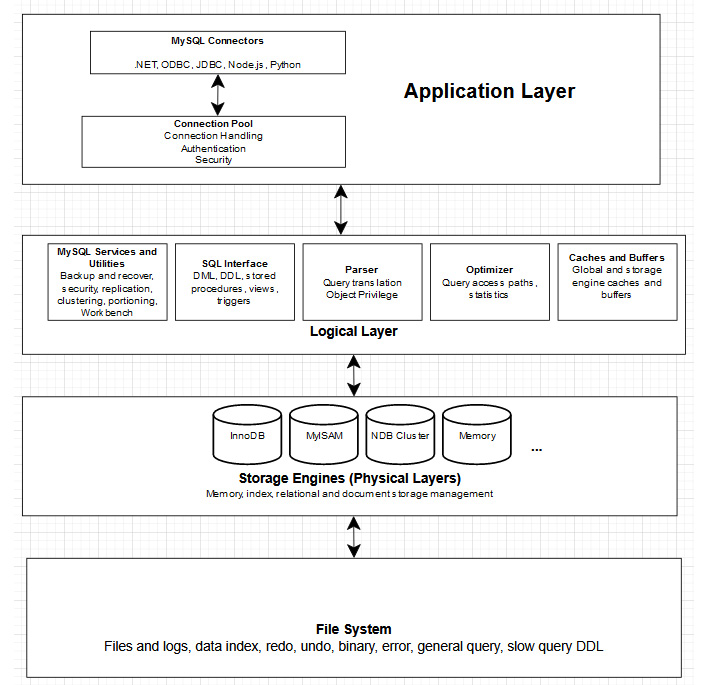-
Book Overview & Buying

-
Table Of Contents

The MySQL Workshop
By :

The MySQL Workshop
By:
Overview of this book
 Free Chapter
Free Chapter
 Sign In
Start Free Trial
Sign In
Start Free Trial

 Free Chapter
Free Chapter
Under the hood, all computer systems consist of several layers. Each layer has a specific role to play within the system's overall design. A layer is responsible for one or more tasks. The tasks are broken down into smaller modules dedicated to one aspect of the layer's role. An operation needs to get through all the layers to succeed. If it fails at one, it cannot proceed to the next and an error occurs.
MySQL server also has several layers. The physical layer is responsible for storing the actual data in an optimized format. The physical layer is then accessed through the logical layer. The logical layer is responsible for structuring data in a sensible format, with all required permissions and structures applied. The highest layer is the application layer, which provides an interface for web applications, scripts, or any kind of applications that have the API to talk to the database.
As discussed before, an RDBMS system typically has a client-server architecture. You and your application are the client, and MySQL is the server.
There are three layers in the MySQL server:
These layers are essential for understanding which part is responsible for how your data is treated. The following is a graphical representation of the basic architecture of a MySQL server. It shows how the different components within the MySQL system relate to each other.

Figure 1.7 – MySQL architecture
The application layer accepts a connection using any one of the client technologies (JDBC, ODBC, .NET, PHP). It has a connection pool that represents the API for the application layer that handles communication with different consumers of the data, including applications and web servers. It performs the following tasks:
When a client connects to the server, several services activate in the connection pool of the server layer.
This layer has all the logic and functionality of the MySQL RDBMS. Its first layer is the connection pool, which accepts and authenticates client connections. If the client connects successfully, the rest of the MySQL server layers will be available to them within the constraints. It has the following components:
The parser has three main operations it will perform on the SQL statement:
SELECT statements. The cached results are kept in case any client, including yourself, runs the same query. If they do so, the parsing is skipped, and the cached results are returned. You will notice this in action if you run a query twice. The first time will take longer for the results to be returned; subsequent runs will be faster.The storage engine layer handles all the insert, read, and update operations with the data. MySQL uses pluggable storage engines technology. This means that you can add storage engines to better suit your needs. Storage engines are often optimized for certain tasks or types of storage and will perform better than others at their "specialty."
Now, you will look into different types of storage engines in the following section.

